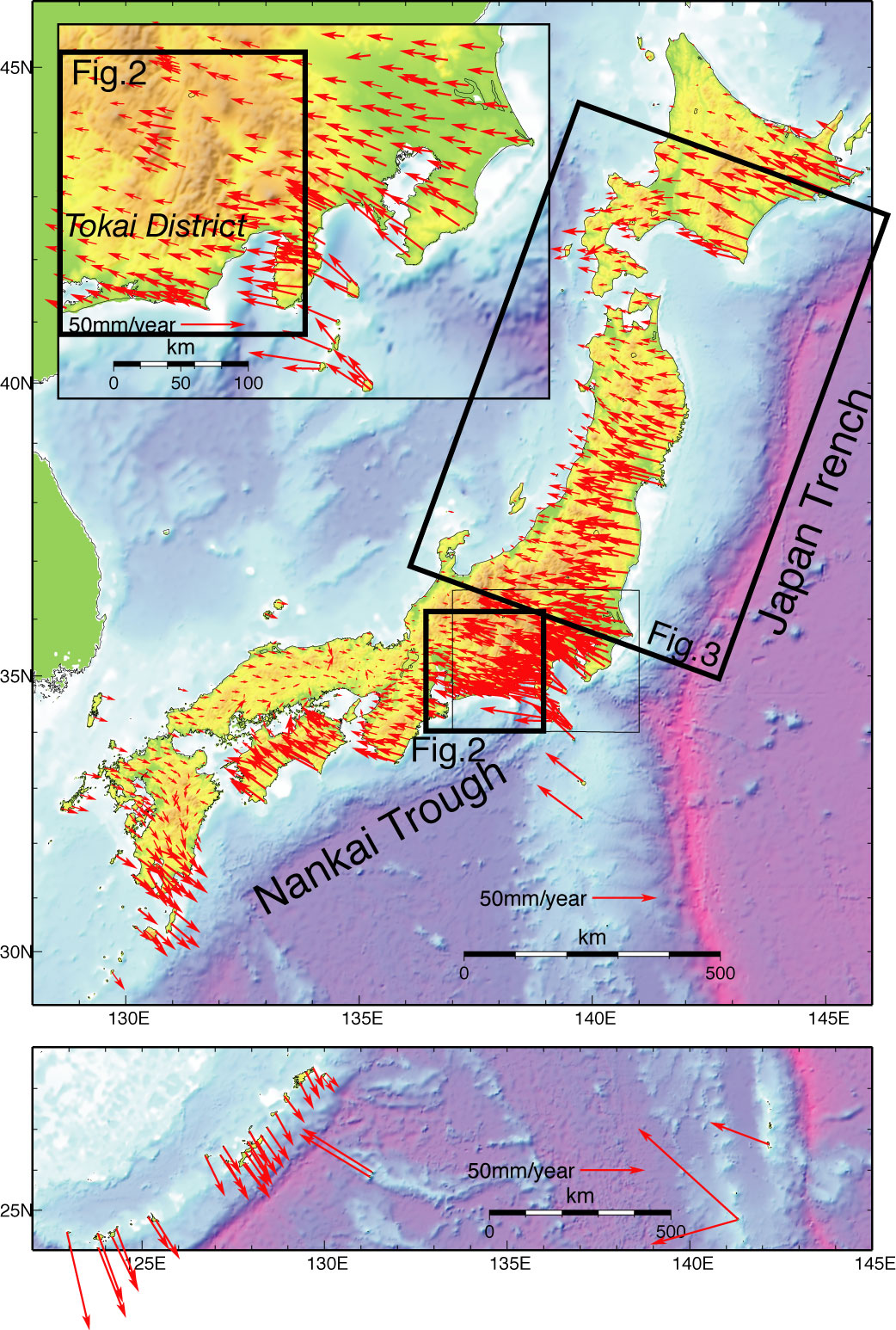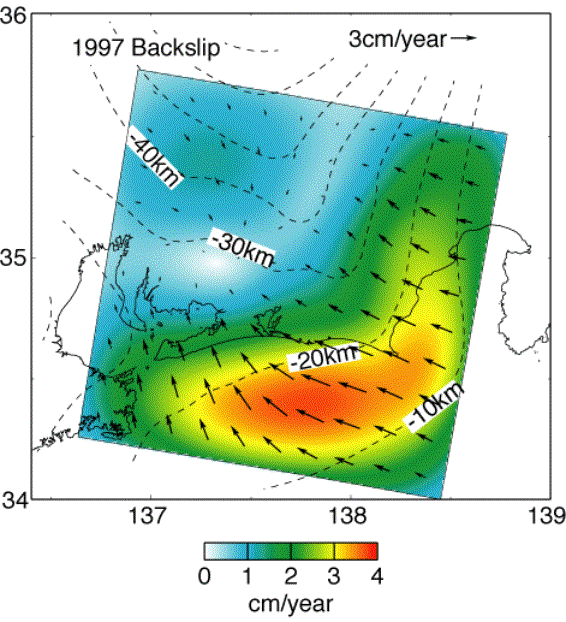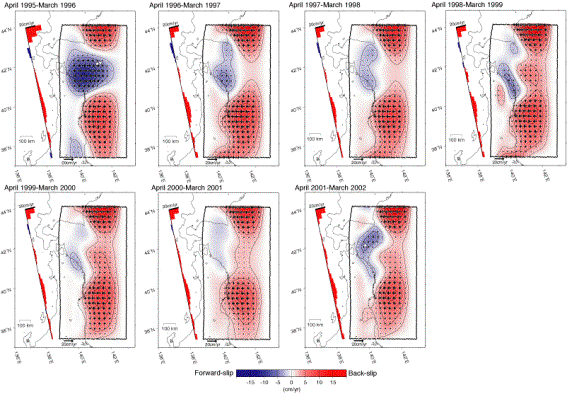Interplate coupling estimated from continuous GPS observation
The Exhibition of IUGG2003The contemporary deformation observed by the GEONET is characterized by east-west contraction in northeastern Japan and northwest-southeast contraction in southwestern Japan (Figure 1). The main source of these contractions is considered to be interplate coupling between the continental plates and the subducting plates at the Japan Trench and the Nankai Trough. There are several studies of the interplate coupling in these regions using inversion analysis of the observed displacement rate at the GPS stations. Figures 2 and 3 show the estimated back-slip distribution on the plate boundaries. The back-slip is nominal slip which is opposite to the direction of plate convergence between subducting and overriding plates [Savage 1983]. The back-slip can be interpreted as the slip deficit from the plate convergent. If the plate boundary is completely locked (e.g. no real slip), the rate of back-slip is the same as the convergence rate between two plates. The slip faster than the convergence rate including afterslip and slow slip events is called as the forward-slip.
Figure 2 shows the back-slip distribution in the Tokai district [Sagiya, 1999]. The mega-thrust earthquakes documented with an average recurrence time of 120 years at the Nankai Trough. Since the last earthquakes, that is, the 1944 Tonankai and the 1946 Nanakaido earthquakes did not ruptured the plate boundary in the Tokai district, the Tokai district is widely recognized as a seismic gap where the great earthquakes is anticipated in the near future. Because plate convergence rate is ~40 mm/yr in Tokai district, The maximum back-slip of 30-40 mm/yr located offshore suggests almost complete locking of the plate boundary in 1997. Since fall of 2000, aseismic slow slip event has been occurring in the transition zone to full coupling to no coupling [Ozawa et al., 2002].
The annual snapshots of interplate coupling in northeastern Japan are shown in Figure 3 [Nishimura et al., 2003]. The dramatic change of slip rate on the plate boundary occurred around 40oN, where blue (forward-slip) turns to red (back-slip). This is interpreted as afterslip following the 1994 Sanriku-Haruka-Oki earthquake. Though afterslip occurred over the coseismic rupture area and its down-dip extension on the plate boundary for 0.3-1.3 year after the 1994 earthquake, it continued only in the down-dip extension for later periods decayed with time. The back-slip rate over 80 mm/yr around 38oN are approximately equal to the plate convergence rate at the Japan Trench. It suggests complete coupling in the region corresponding the Miyagi-Oki, where the possibility of the occurrence of an M~7.5 earthquake within 20 years is anticipated to be 88 % statistically.
These studies contributed to assessment of seismic potential for future large earthquakes in Japan. 
Figure 1. Horizontal displacement rate vectors of the continuous GPS stations in Japan with respect to Ogata station denoted as Ref. The data period is from April 1997 to March 1999. 
Figure 2. Distribution of back-slip (interplate coupling) in the Tokai district. Arrows and color represent direction and magnitude of back-slip at each point on the plate boundary. Dashed lines show depth contours of the plate boundary. 
Figure 3. Snapshot of annual slip distribution in northeastern Japan. Red and blue areas indicate the region of the back-slip and the forward-slip. Contour interval is 20 mm/yr. Stars are epicenters of large (M>6) earthquakes. Reference
|

